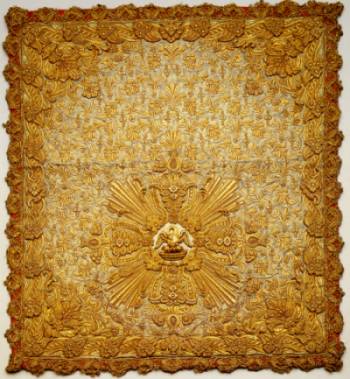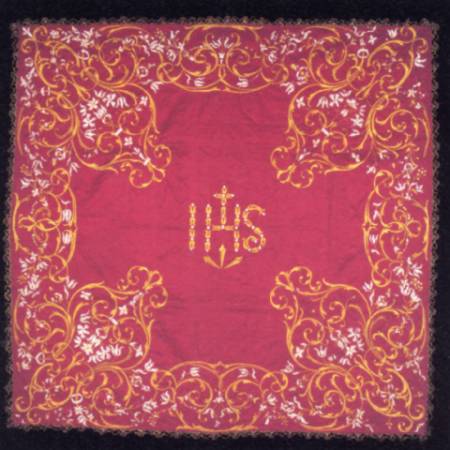| |
books
and articles:
- Christine Aribaud, Soieries
en Sacristie, Fastes liturgiques, 17e – 18e c.,
Paris 1998, ISBN 2-85056-337-4
- Linus Birchler, Die Kunstdenkmäler des Kantons Zug,
vol. 2, Basel 1959, p. 107
- Connoisseur October 1962 (vol. CLI, no 608)p. 100): The
chalice veil (Burrell 29/9)
- Millard, O.S.B., Dom Bede, Ecclesiastical Textiles, in:
catalogue Pugin exhibition, London 1994, p. 206
- Margaret Swain, Scottish Embroidery, Batsford 1986
- Margaret Swain, Vestments at Traquair, in: Bulletin du
CIETA, No. 72, 1944, pp. 48-59
- Tresors du musee d'art religieux et mosan de Liege,
exposition au musee du petit palais de la ville de Paris,
du 16 octobre 1981 - 3 janvier 1982.
- Wanner, Anne, Zur Restaurierung von alten Stoffen, in:
100 Jahre Historisches Museum Zug, 1979, Hg. Zuger
Kunstgesellschaft, S. 30 - 38
- Fritz Witte, die liturgischen Gewänder und kirchlichen
Stickereien des Schnütgenmuseums in Köln, Berlin 1926,
Taf. 65, 66
- Ute-Christiane Bergemann, Stickereien, Bestandskatalog
der Kunstsammlungen der Stiftung Preussische Schlosser
und Garten Berlin-Brandenburg, Berlin 2000, text
in german, p. 353, Nr. 221
- Le Fil de l'art. Les broderies des Ursulines de
Québec, Rédigé
par Christine Turgeon
- M.PÉREZ SÁNCHEZ
LA MAGNIFICENCIA DEL CULTO. ESTUDIO HISTÓRICO-ARTÍSTICO
DEL ORNAMENTO LITÚRGICO EN LA DIÓCESIS DE
CARTAGENA.Real Academia Alfonso X el Sabio, Murcia, 1997,
223 págs.
articles by Robert, Ludwig
Suter on chalice veils:
- Scholastica An der Allmend, eine Luzerner Paramentenstickerin
der Barockzeit, in: ZAK, Bd. 25, Heft 3, 1968
- Johanna Baptista Herzog von Beromünster, eine
Paramentenkünstlerin im
Kloster Gnadenthal, in: Heimatkunde des Michelsamtes,
Geschichtsverein Beromünster, 1982
- Barocke Paramentenstickkunst im Kloster Hermetschwil,
in: unsere Heimat,
Jahresschrift der Historischen Gesellschaft Freiamt, 57.
Jahrgang 1987
- Abundantia von Reding, eine Schwyzer
Paramentenstickerin der Barockzeit, in: Mitteilungen des
Historischen Vereins des Kantons Schwyz, Heft 79, 1987
- Kunigunde von Fleckenstein 1651-1707, eine Luzerner
Blumenmalerin mit
der Nadel, in: Jahrbuch der Historischen Gesellschaft
Luzern, Nr. 6, Luzern 1988
- Sakrale Weissstickereien in Beromünster, in:
Schweizerische
Arbeitslehrerinnen-Zeitung, Nr. 4, 1988
|




